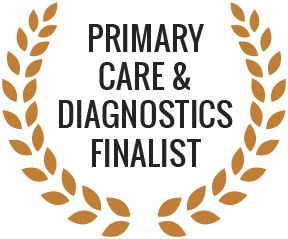Knowing the most common causes is therefore helpful, hopefully keeping the risk of future stomach aches to a minimum through information. But when is a stomach ache more than something temporary you can deal with at home? In this guide, we also set out all the scenarios that should have you going straight to a doctor. Happy reading!
Common Causes of Stomach Aches
1. Indigestion (Dyspepsia)
Indigestion is one of the most frequent causes of stomach discomfort. It often occurs after eating and can be triggered by overeating, consuming spicy or fatty foods, or eating too quickly. Symptoms may include bloating, belching, and a feeling of fullness. Indigestion is usually not serious and can often be relieved with lifestyle changes or over-the-counter medications.
If you experience indigestion often, it’s worth keeping a food diary. Indigestion might be triggered by certain meals or food types, eating at a certain time of day, eating too late (just before bed), eating larger portions than usual, or eating quickly / when stressed.
2. Gastroenteritis
Gastroenteritis, commonly known as the stomach flu, is an inflammation of the stomach and intestines, usually caused by viral or bacterial infections. Symptoms include abdominal cramps, diarrhoea, vomiting, and fever. It’s often self-limiting, but hydration is crucial to prevent dehydration, especially in children and the elderly.
Unfortunately, many viruses can manifest as gastric symptoms first, so stay alert and stay home to avoid spreading to others.
3. Food Intolerance or Allergy
Food intolerances (like lactose intolerance or gluten sensitivity) can lead to stomach aches after consuming certain foods. Symptoms may include bloating, gas, diarrhoea, and abdominal pain.
In more severe cases, food allergies can cause anaphylactic reactions, which require immediate medical attention. These reactions often cause swelling of the tongue, throat, and eyes and constrict breathing.
4. Constipation
Constipation occurs when bowel movements become infrequent or difficult to pass. This can lead to a buildup of stool in the intestines, causing cramping and discomfort. Factors contributing to constipation include a lack of dietary fibre, dehydration, and a sedentary lifestyle. Increasing fibre intake, hydration, and physical activity can often alleviate symptoms.
Little tips like taking chia seeds or a little prune juice can also help. However, if you have constipation that is not resolving, you should see a doctor.
6. Peptic Ulcers
Peptic ulcers are sores that develop on the stomach lining or the upper part of the small intestine. They can cause burning stomach pain, bloating, and nausea. Ulcers are often caused by Helicobacter pylori infection or prolonged use of nonsteroidal anti-inflammatory drugs (NSAIDs). They’re also associated with chronic stress.
While some ulcers heal on their own, medical treatment is often necessary to prevent complications.
7. Gallstones
Gallstones are hard deposits in the gallbladder and can obstruct the bile duct, leading to intense pain in the upper right abdomen, especially after eating fatty foods. Accompanying symptoms may include nausea and vomiting. Medical intervention may be necessary if a gallstone causes blockage or inflammation, sometimes requiring surgery.
8. Appendicitis
Appendicitis is an inflammation of the appendix, typically presenting with sharp pain starting near the belly button and moving to the lower right abdomen. Other symptoms may include fever, nausea, and loss of appetite. Appendicitis is a medical emergency that often requires surgical removal of the appendix.
9. Diverticulitis
Diverticulitis occurs when small pouches in the colon (diverticula) become inflamed or infected. Symptoms include abdominal pain, fever, and changes in bowel habits. A diet high in fibre can help prevent diverticulitis, but acute cases may require antibiotics or surgery.
10. Kidney Stones
Kidney stones are hard mineral deposits that can form in the kidneys and cause intense pain, often radiating from the back to the lower abdomen. Symptoms may include blood in the urine, nausea, and frequent urination.
Treatment may involve pain management, increased fluid intake, or medical procedures to remove or break down the stones.
When to See a Doctor
While many stomach aches are mild and resolve on their own, there are specific situations when it is essential to seek medical attention:
1. Severe or Persistent Pain
If you experience severe or persistent abdominal pain, it is crucial to see a doctor. Pain that is sudden and intense may indicate a serious condition that requires immediate evaluation.
2. Fever and Vomiting
If the stomach ache is accompanied by a high fever (typically above 38.3°C) or persistent vomiting, it may indicate an infection or other serious condition that requires medical intervention.
High fever combined with abdominal pain could suggest appendicitis, pancreatitis, or a gastrointestinal infection, all of which need prompt attention.
3. Signs of Dehydration
If you are experiencing severe diarrhoea, vomiting, and abdominal pain, watch for signs of dehydration, such as dry mouth, decreased urination, dizziness, or rapid heartbeat. Dehydration can be particularly dangerous, especially for young children and older adults, and may require intravenous fluids.
4. Blood in Stool or Vomit
The presence of blood in your stool or vomit is a serious symptom that should never be ignored. This could indicate a range of issues, from gastrointestinal bleeding to more severe conditions like ulcers or cancer. If you notice this symptom, seek medical help immediately.
5. Unexplained Weight Loss
If you are experiencing unexplained weight loss along with abdominal pain, it is essential to consult a doctor. This could be a sign of an underlying condition, such as cancer, chronic infection, or metabolic disorder.
6. Changes in Bowel Habits
Significant changes in bowel habits—such as persistent diarrhoea, constipation, or mucus in the stool—accompanied by abdominal pain warrant medical evaluation. These changes could signify conditions like infections or inflammatory bowel disease (IBD).
7. Difficulty Swallowing or Persistent Heartburn
If stomach pain is accompanied by difficulty swallowing or persistent heartburn that does not respond to over-the-counter medications, it may indicate gastroesophageal reflux disease (GERD) or other oesophageal disorders. These conditions require medical management to prevent complications.
8. Swelling or Tenderness in the Abdomen
If your abdomen appears swollen or tender to the touch, this could indicate an underlying problem, such as an infection or obstruction. It’s important to seek medical evaluation to determine the cause.
9. Pain that Radiates to Other Areas
If your abdominal pain radiates to other parts of your body, such as your back, shoulder, or chest, it may indicate a more serious condition, such as pancreatitis, heart issues, or gallbladder problems. Prompt medical attention is necessary in these cases.
Clearly, stomach aches can be caused by a wide range of conditions. For most of us, the pain and discomfort are temporary and are caused by something we ate, maybe a stressful day or a simple infection. But they could also signal a host of serious conditions that require medical attention, so don’t wait too long to see medical support when you need it.
To book an appointment, call us or book online today.






